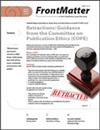The genus Eurytromma from Sri Lanka: the homology of penial macrosetae in Podoctidae matches the gonyleptoid AE11 pattern (Opiliones: Laniatores: Epedanoidea)
IF 0.9
3区 农林科学
Q3 ENTOMOLOGY
引用次数: 0
Abstract
Abstract. A description of the pattern of structure and organization of the penial macrosetae was recently put forward for Gonyleptoidea Sundevall, 1833 and demonstrated to occur also in other families of Grassatores Kury, 2002, such as Assamiidae Sørensen, 1884, Epedanidae Sørensen, 1886 and Pyramidopidae Sharma, Prieto & Giribet, 2011. This set of homology hypotheses is herein called AE11 pattern. In this work, the monotypic Sri Lankan genus Eurytromma Roewer, 1949 of the family Podoctidae Roewer, 1912 (which is currently assigned to the Epedanoidea in the Grassatores) is studied. Male genitalia of Eurytromma are described for the first time and the first attempt is made to reconcile the chaetotaxy of ventral plate of podoctid species with the AE11 pattern. The podoctid genera Hoplodino Roewer, 1915, Strandibalonius Roewer, 1912 and Santobius Roewer, 1949 are also exemplified here; their set of macrosetae is described and the AE11 pattern is demonstrated to occur in all of them. Therefore, AE11 is more phylogenetically widespread in the Grassatores than previously thought. Eurytromma pictulum (Pocock, 1903) from Sri Lanka is redescribed. It is characterized by the presence of a meso-frontal stridulatory saw of denticles on the cheliceral hand and extreme reduction of mesotergal sutures. A further refinement is made on the current terminology system of cheliceral dentition of Podoctidae.来自斯里兰卡的Eurytromma属:足科中巨大阴茎的同源性与性腺下垂型AE11模式相匹配(Opiliones:Laniatores:Epedanoidea)
摘要最近为Gonyleptoidea Sundevall(1833)提出了对大阴茎结构和组织模式的描述,并证明其也出现在Grassatores Kury(2002)的其他科中,如Assamiidae Sørensen(1884)、Epedanide Sørensen(1886)和Pyramidopidae Sharma(Prieto&Giribet,2011)。这组同源性假设在本文中被称为AE11模式。在这项工作中,研究了Podoctidae Roewer,1912(目前归属于草地中的Epedanoidea)科的斯里兰卡单型属Eurytromma Roewer(1949)。首次描述了Eurytromma的雄性生殖器,并首次尝试将足足类物种腹板的毛性与AE11模式相协调。足足足动物属Hoplodino-Roewer,1915年,Strandibalonius Roewer(1912年)和Santobius Roewell(1949年)也在这里举例说明;描述了它们的一组宏观切片,并且证明AE11模式在所有这些切片中都发生。因此,AE11在Grassatores的系统发育上比以前认为的更为广泛。来自斯里兰卡的Eurytromma pictulum(波科克,1903)被重新描述。其特征是螯手上存在小齿的中额尖锐锯,中额缝合线极度减少。对目前足科螯齿列的术语体系作了进一步的完善。
本文章由计算机程序翻译,如有差异,请以英文原文为准。
求助全文
约1分钟内获得全文
求助全文
来源期刊

Journal of Arachnology
生物-昆虫学
CiteScore
2.20
自引率
10.00%
发文量
34
审稿时长
>12 weeks
期刊介绍:
The Journal of Arachnology publishes scientific articles reporting novel and significant observations and data regarding any aspect of the biology of arachnid groups. Articles must be scientifically rigorous and report substantially new information.
 求助内容:
求助内容: 应助结果提醒方式:
应助结果提醒方式:


